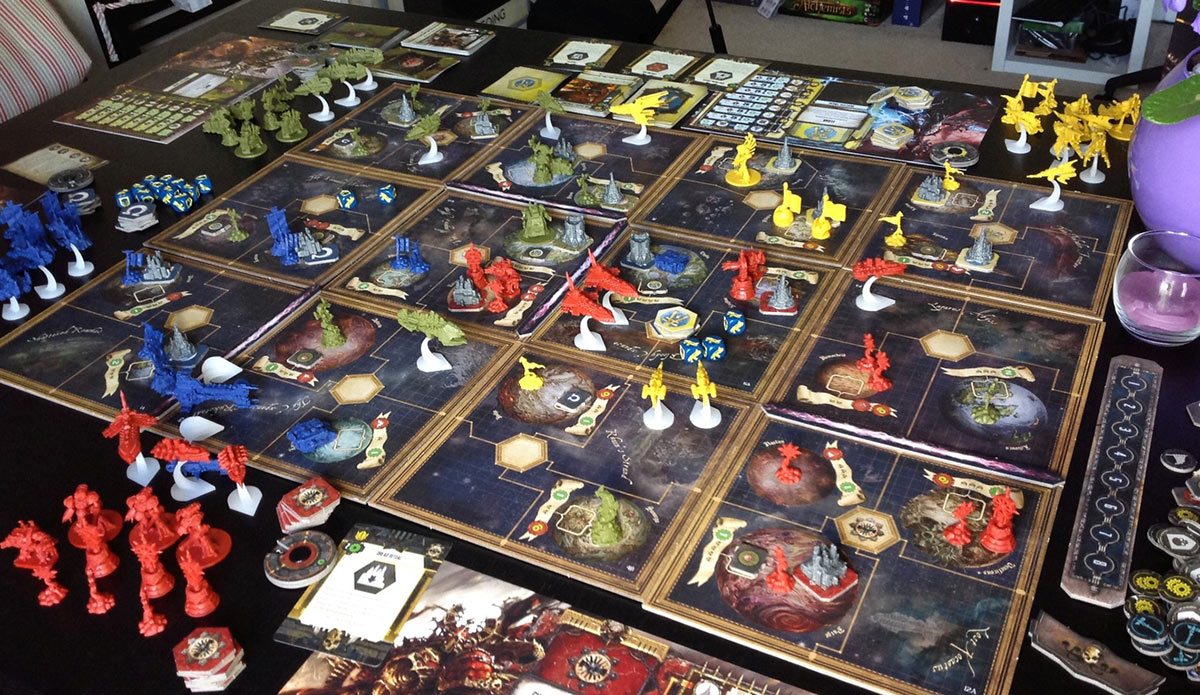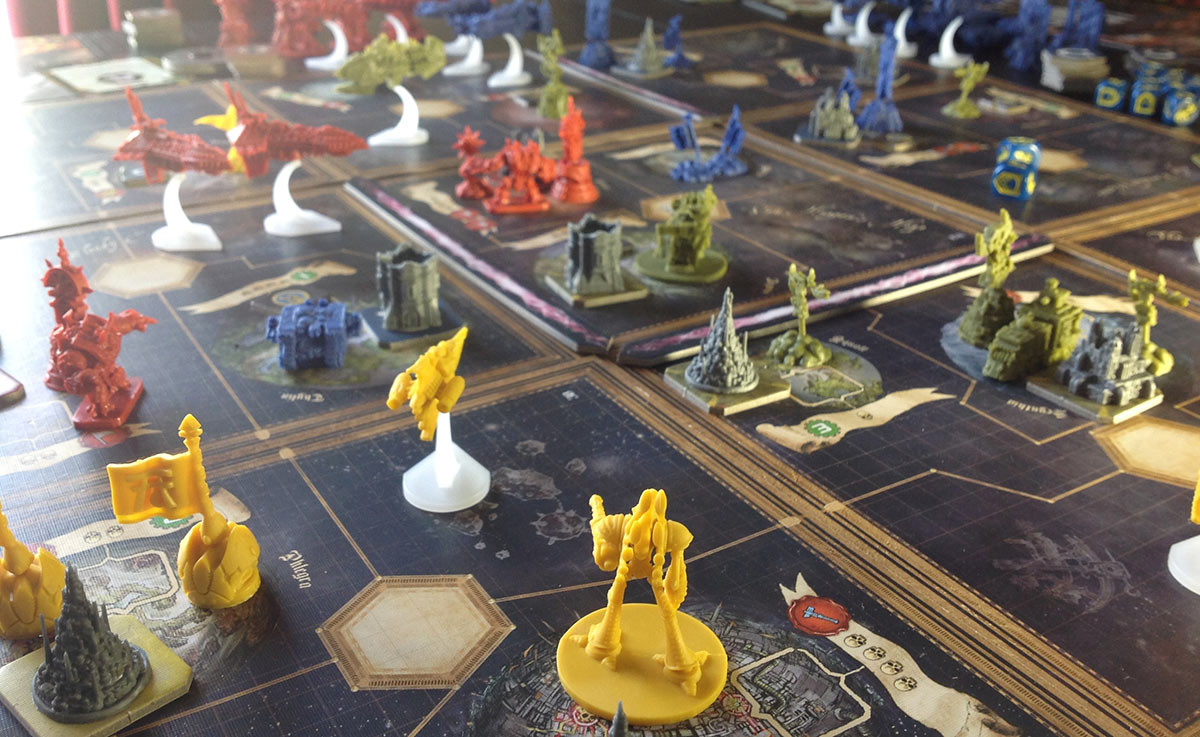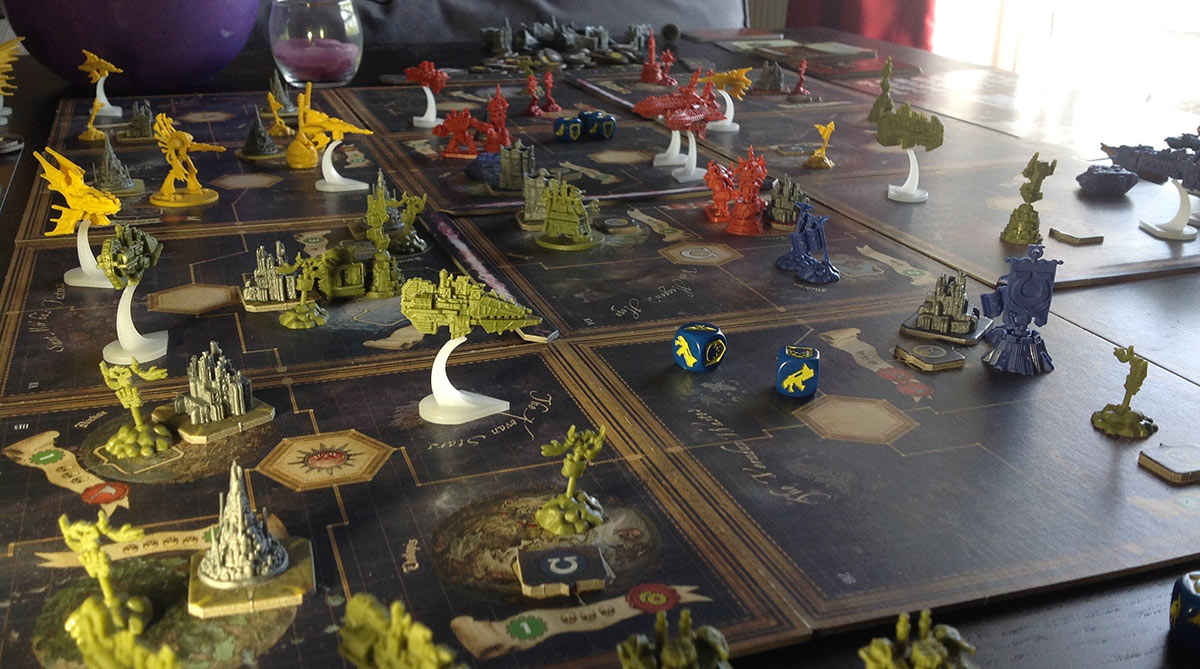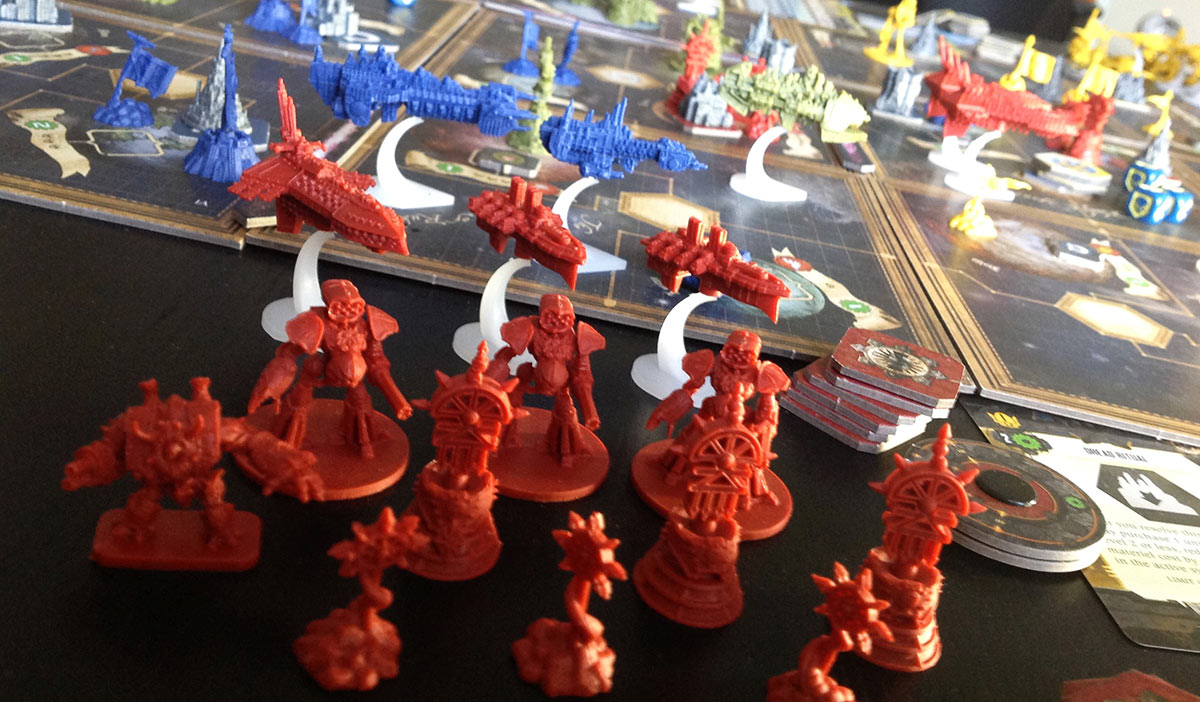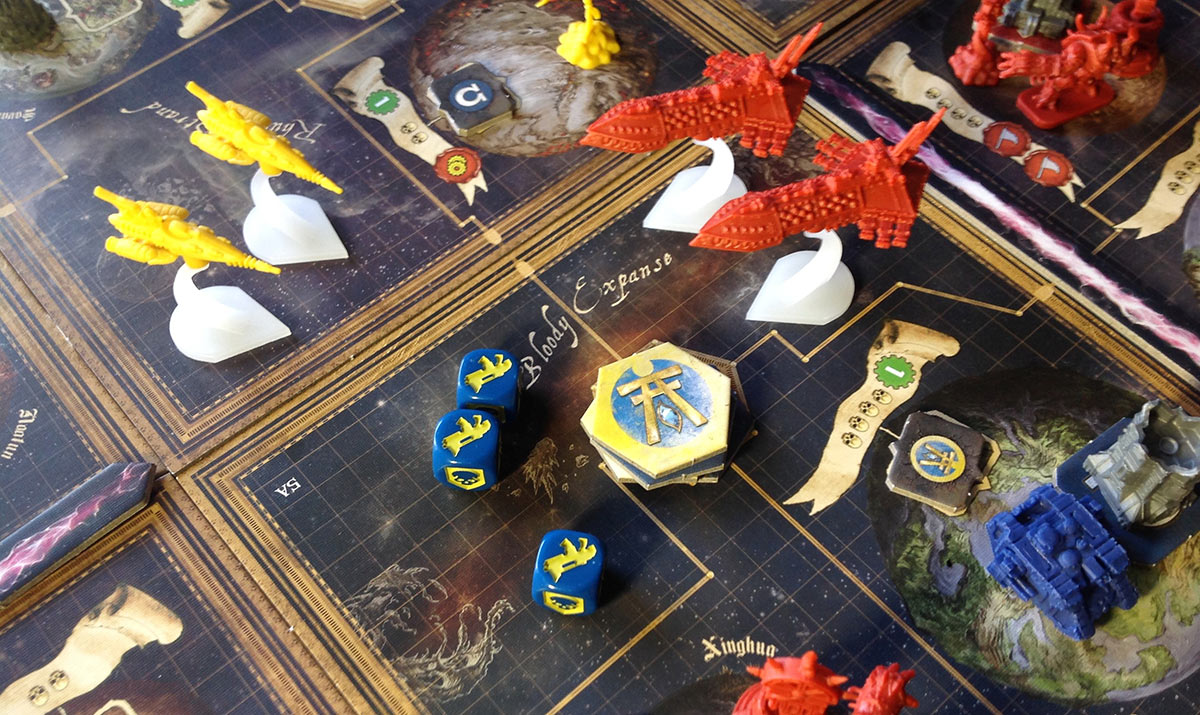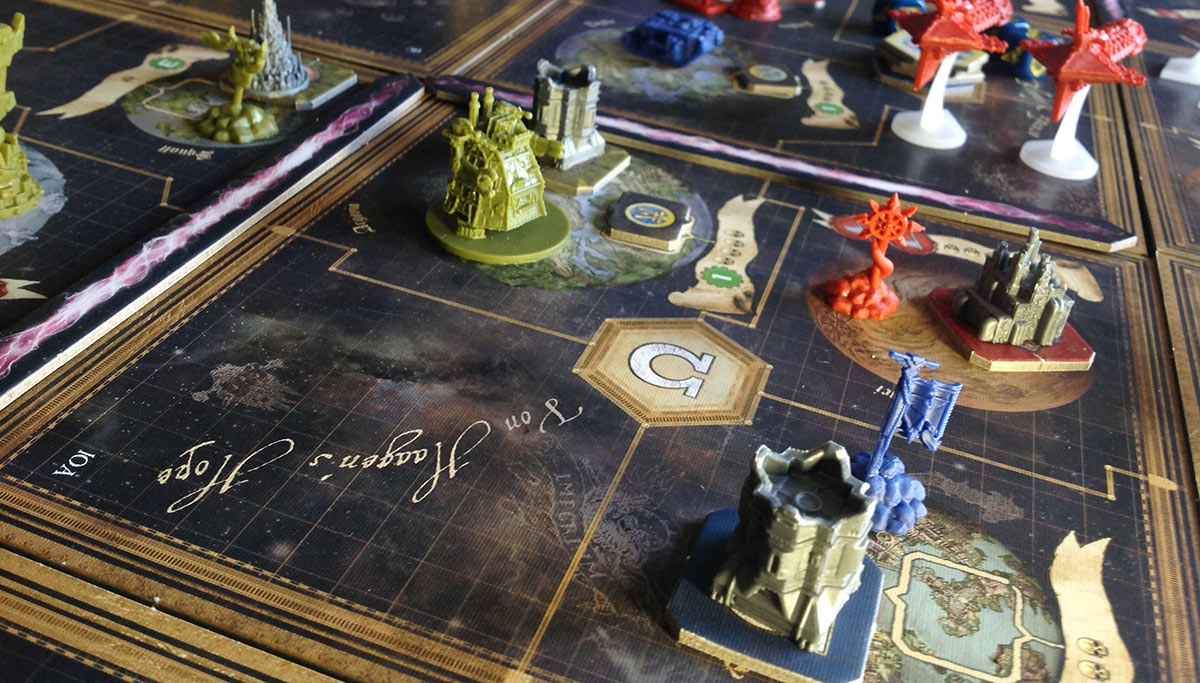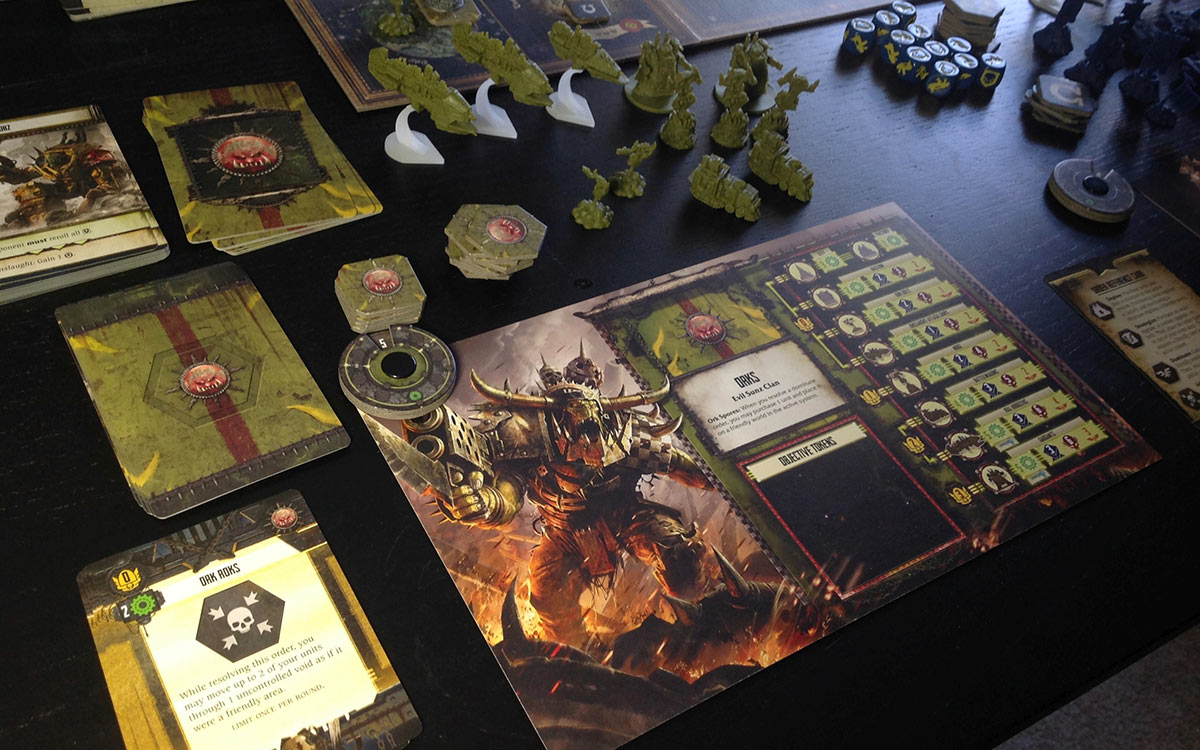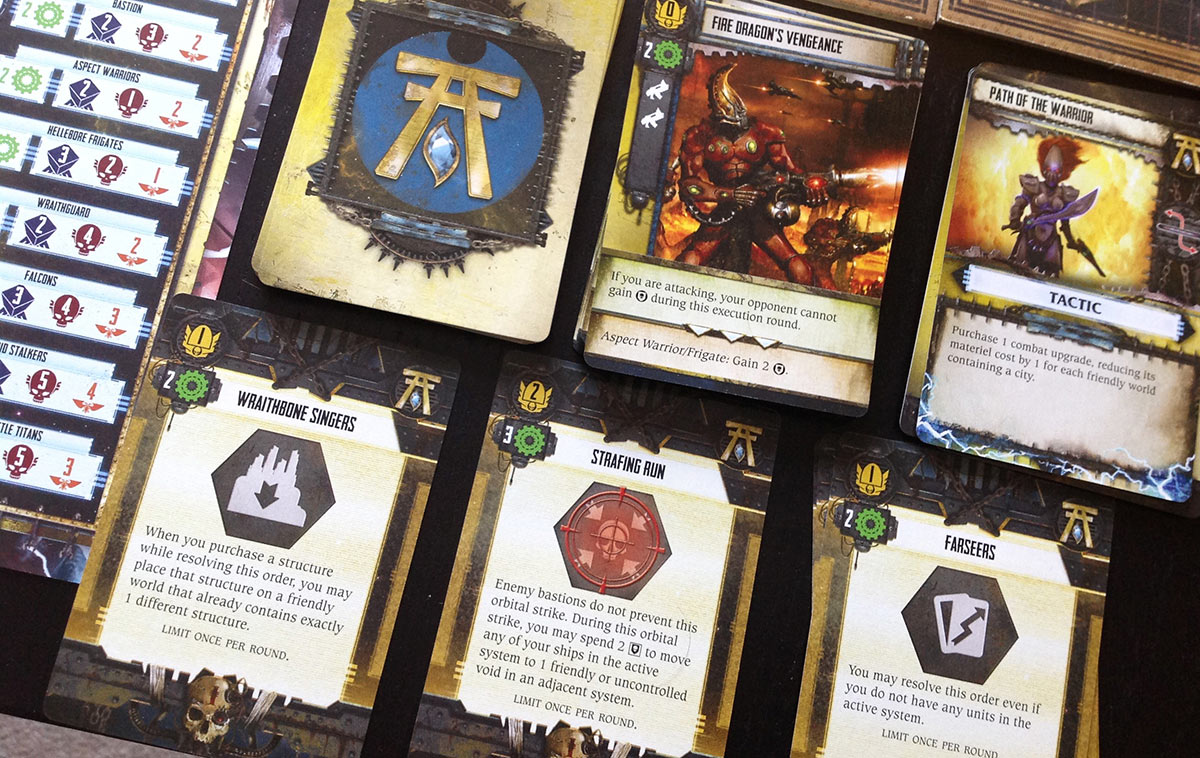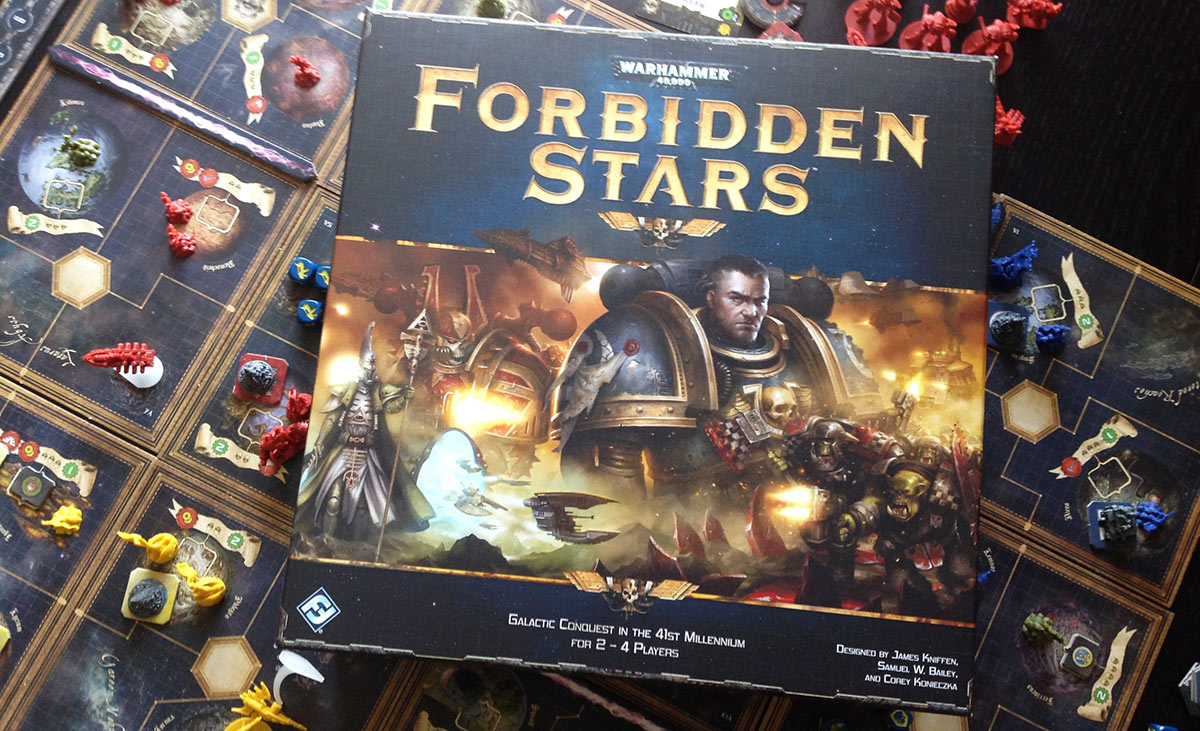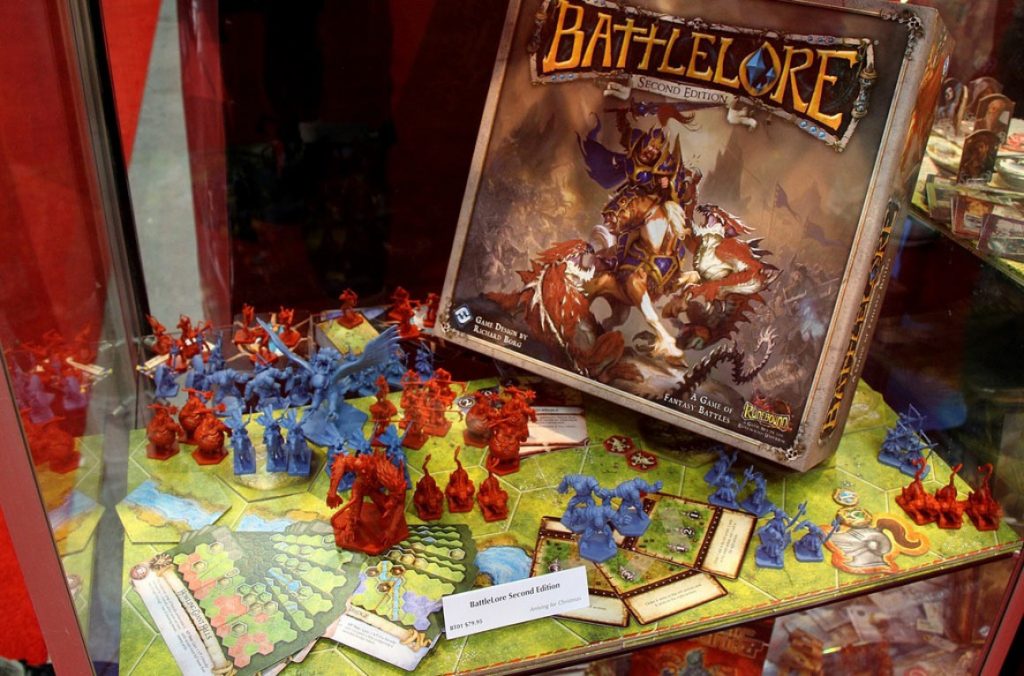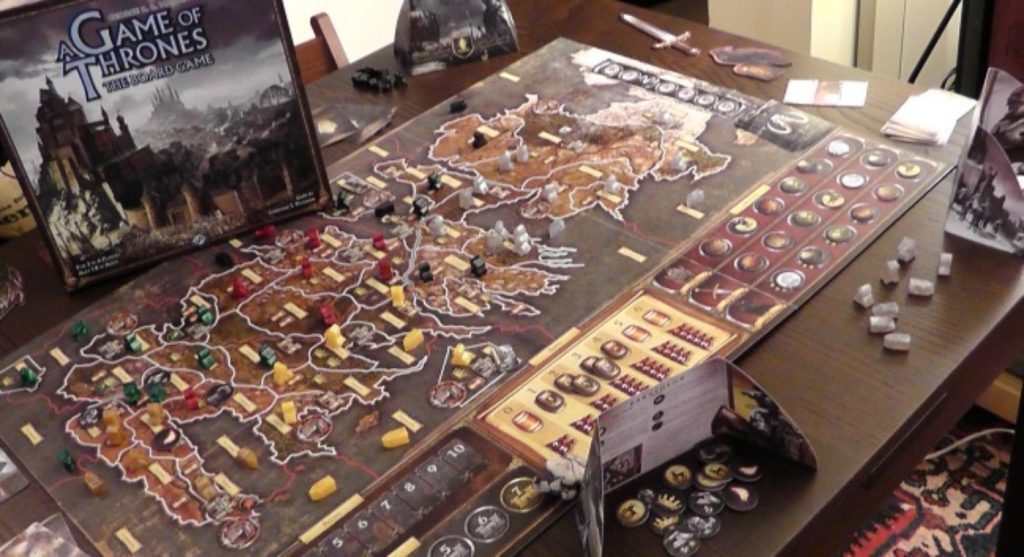Quinns: I don’t really like the Warhammer universes. When I was a kid I couldn’t get enough of them. “In the grim darkness of the future there is only war”? Holy shit!
These days I find them a little tired. Conflict is exciting, but not without peace to contrast it with, and not when you siphon all the humanity out of it. Where’s the ego and romance? Where are the themes and mysteries? And obviously: Where are the women?
Let me wrap this up before people start sending me photos of Sisters of Battle, or pointing out that the expanded universe is awesome (I know!). My point is I was a little grouchy when I opened up of Forbidden Stars, Fantasy Flight’s new, striking war game set in the Warhammer 40K universe.
I’m happy to say that Forbidden Stars defrosted my icy heart. This game is sensational.
What we’ve got here is a grand box loaded with plastic figures in the style of Fantasy Flight’s Game of Thrones board game or Chaos In the Old World, so you’ll want to approach a game night with caution. SU&SD accepts no responsibility for what happens if you don’t learn the rules before inviting your friends over, or try and play it on a weeknight. Our first playthrough with 4 players took 5 hours.
5 glorious hours, mind you, each one of which confirmed my belief that Forbidden Stars is the strongest of Fantasy Flight’s big-box wargames, and easily justifies its higher price tag.
The game you’re playing sees 2-4 players taking their seats and laying out an array of planets, then placing their faction’s starting units around the map, and finally placing one another’s “objective tokens” on various planets. These tokens represent all sorts of things, from a “Worthy Opponent” for the Chaos cultists to slay, to the bones of a saint belonging to the pious Space Marines. You can pick up one of your faction’s objective tokens if you have units on that planet at the end of a turn, and you win the game when you have a number of objective tokens equal to the number of players.
There’s lots of game left for us to cover, but we have to stop here and talk about these objective tokens. These little nubs of cardboard might be the single best thing in the game.
Most games of claiming territory (like most wars) are a kind of miserable see-saw. The Game of Thrones game or Risk are both perfect examples. You grab some land, which makes another player sad, and then lose territory elsewhere, which makes you sad. And that’s the best case scenario! If someone actually runs away with a territorial lead then someone else is inevitable packed into smaller and smaller territory and has a crap time.
Forbidden Stars offers something universally positive. You have all the drama of players trying to wrestle planets away from one another, but because the aggressor is trying to grab their objective (a) the defender won’t take the attack personally, (b) the defender is losing a planet that meant nothing to them anyway, and (c) once the aggressor has claimed their token their interest in it wanes, and both players will be ok with the defender taking it back.
I’m not sure if I’ve ever played a game that’s so grand and tense, but so easy-going at the same time. It’s brilliant.
Which isn’t to say that Forbidden Stars is an ordinary war game of buying armies and sliding them cautiously around a map. I mean it is, but you’re doing so in a such a new, interesting way that you’re guaranteed to get that beautiful bit of a board game night where everybody’s sat in silence, occasionally giggling to themselves at how great this puzzle is.
A round starts with each player taking turns to place secret order tokens face-down on a tile on the map. These tokens might say “I’m building units & facilities here”, “I’m claiming resources from these planets”, “I’m upgrading my faction”, or (most importantly) “I’m moving units into this sector and/or starting a fight”. Once everyone has placed four orders around the galaxy, you take turns to flip one of your tokens over and do that thing. Once all the orders have been revealed you move on to the next round.
The reason this is a laughable nightmare is that if your opponent wants to do something in the same sector of space as an existing order token, they put their token on top. Then later, when you’re flipping over tokens to activate them, you can only flip tokens that are on the top of any stacks. See below:
Here, the yellow Eldar player can activate that top order whenever they want. The blue Space Marine’s orders beneath it will have to wait until the Eldar pops that top order, forcing the Space Marines to trigger their orders elsewhere first.
The result is a ridiculous game of bluffs, second-guessing, witty plays and deadly mistakes. Here’s an example. Let’s say you want an objective in the Ork’s home system. The Ork player knows you’re waiting to pounce, so will want to build more units there to protect themselves.
You see them put down a token in that system. Is that their Build order? If so, you could put down a Move order on top of it, and conquer the factory before it Builds. But if the Ork order is an Upgrade, placing your Move could see the Ork playing their Build order on TOP of your Move, then he or she will build defenses BEFORE you attack and you’ll have committed to a fight you’ll lose.
…Unless you place an Upgrade order, bait out their Build, and THEN play the Move? But if you fail to conquer during your move, you’ll later reveal an Upgrade order in an unfriendly system and it’ll be useless.
“Wait. Whose turn is it. Is it my turn? Shit, sorry, I’m still thinking.”
So we’ve got a feel-good war with unique, interesting strategy. Reinforcing both of these themes are Forbidden Stars’ warp storms. Four slivers of pink cardboard which you’ll love and hate in equal measure (you can see them above).
It’s simple- they’re walls. Utterly impassable walls that require ludicrous effort to circumnavigate, keeping you safe from some opponents and forcing you towards other people. At the end of each turn, however, players are given some very limited and unpredictable control over the storms, rotating one or sliding another to create brand-new borders, opportunities and social dynamics. The mortal enemy you’ve been fighting since the game began? They’re now sealed away. Maybe you’re safe from everybody, and you can just build up. Then two storms shift, and suddenly you’re being pincered by two players! Oh god.
Again, it makes conflict less rude because players are often forced into fights, but it’s also a fun mechanic to play with because it creates such weird tactics. You can stop an aggressor in their tracks by opening a back-door into their objective-rich territory, for example. And every turn necessitates that you study a brand-new board, so the war never grows stale.
All of which is a lot of words to have written without pointing out the most obvious feature of Forbidden Stars, which is HOLY CRAP LOOK AT ALL THESE BITS. If board games can be rated on choking hazards (and they can), Forbidden Stars sits securely atop a throne of bits.
Every faction gets a little army of plastic dudes and no less than four (four!) decks of cards to play with, representing random events, their combat deck, upgrades for their combat deck and upgrades for their order tokens.
All these bits serve a couple of purposes, the bigger one being a layer of distracting colour on top of the game you’re playing. There’s always something to think about, to pick up and fiddle with, and there’s just enough of it whereby this stuff fits into the downtime you have without creating extra downtime as you look through it.
Someone else is having a fight? Leaf through your personal combat deck, familiarising yourself with each card’s powers and artwork. Someone’s agonising over their next move? Why not go window shopping for cards you might buy next.
Continuing Forbidden Stars’ high wire balancing act is the fact that all of your faction powers are exciting, without ever letting you crush players unexpectedly with some unknown card. It’s more like you’re tweaking settings and rotating dials before getting into the next fight. You don’t need to know what cards your opponent’s bought, really, just how many times they’ve taken the upgrade action.
The other purpose of the bits is to give the game a gentle, upward power arc. Just like how the Warp Storms are forever changing the map, the upgrades you buy give you control over a more and more unpredictable, powerful galactic superpower.
How you actually resolve fights is a whole other minigame that’s a little over-complex and unintuitive, but still provides plenty of theatre and tension.
The two combatants first roll a giddy handful of custom dice depending on how many soldiers they pour into the fight, and the dice produce some mix of shields, morale and GUNS. Players then take turns to play cards from a hand drawn from the top of their personal, customised combat deck (since any cards you buy replace crappy starting ones of your choice). Any card you play adds more shields, guns or morale to your total as well as resolving a special effect.
If you have more guns than your opponent has shields you can rout or even destroy their forces, winning you the battle quickly. But if you think you can survive three rounds of this particular punch-up, the victory goes to whoever scored more morale along the way. And of course, of course, each faction in the game comes at combat in an entirely new way. Orks produce ALL THE GUNS, but if you can just survive long enough they’ll panic and run away. Chaos are armed with a kind of terrifying inevitability, converting people into cultists right there on the battlefield. That kind of thing. You’ll want to play Forbidden Stars four times just to play with all these different toys.
If it weren’t for some really awkward rules around retreating and routing (you can look forward to reading those rules four or five times and still not quite understanding them), the biggest criticism that I could level at Forbidden Stars is that it doesn’t seem to fit the Warhammer 40K setting.
In the grim darkness of the future, there should be pain, and cruelty, and hatred, all under the creeping threat of Chaos devouring the galaxy. Instead, we get a meticulously thought-out class act, where if you can handle a fifteen minute rules explanation you’ll have a great time with lots of laughter, smiles and memorable moments.
That can’t be right. Can it?

